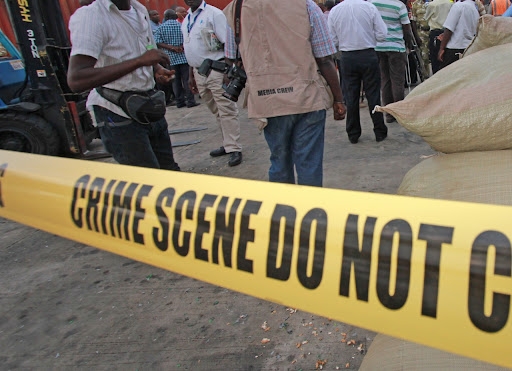
 Protesters during demonstrations over the death of blogger and teacher Albert Ojwang, which quickly spiraled into chaos on Tuesday/DOUGLAS OKIDDY
Protesters during demonstrations over the death of blogger and teacher Albert Ojwang, which quickly spiraled into chaos on Tuesday/DOUGLAS OKIDDYFormer Deputy President Rigathi Gachagua has condemned the government’s handling of Tuesday’s protests in Nairobi, calling the violent scenes “one of the lowest moments of post-independence Kenya.”
In a strongly worded statement, Gachagua decried the
excessive use of force by police during demonstrations over the death of
blogger Albert Ojwang.
He also condemned the reported involvement of armed goons who violently disrupted peaceful protests organised by civil society and human rights groups.
“Young people and patriotic Kenyans expressing themselves on the death of an innocent Albert Ojwang have been beaten up, their property destroyed, and lives lost,” Gachagua lamented.
“The nation is sinking in international shame by disrespecting dignity for human life.”
The former DP pointed to footage showing police charging at protesters, and some alleged sponsored thugs robbing demonstrators in broad daylight.
He singled out the police shooting of a hawker in the CBD as a grim symbol of unchecked police brutality.
“What is the logic behind shooting an innocent and harmless hawker selling masks at close range?” he asked.
“What police training is this? This is as if the brutal murder of Albert Ojwang in police custody isn't enough.”
Ojwang, a teacher and prominent blogger, died under suspicious circumstances while in police custody, sparking national outrage and calls for justice.
Protesters have demanded the immediate arrest and
prosecution of Deputy Inspector-General of Police Eliud Lagat, whom they accuse
of overseeing Ojwang’s detention and covering up the death.
Gachagua further claimed he had warned of a coordinated plan to use police and criminal gangs to suppress dissent.
“Kenyans enjoying their constitutional right to assembly and expression were invaded by the police and state-sponsored goons under the full glare of the camera,” he said.
“Stop the brutality and violence. It is doing more harm than good to our country.”
Tuesday's demonstrations, which began peacefully in the morning across Nairobi's CBD, descended into chaos by mid-morning as riot police deployed at key locations such as the National Archives, Kencom, and Parliament Road used teargas to disperse the crowds. Suspected hired goons later infiltrated the protests, attacking demonstrators and looting their belongings in full view of both the public and security forces.











